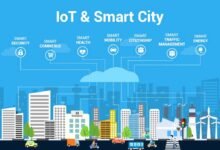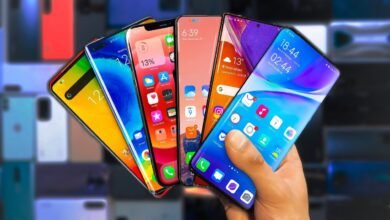5G and IoT Synergy: Tips for Harnessing Next-Gen Connectivity

In today’s rapidly evolving technological landscape, the synergy between 5G and the Internet of Things (IoT) emerges as a pivotal force driving innovation and connectivity. Next-gen connectivity takes center stage, transforming how we interact with devices and reshaping the possibilities of a connected world. As businesses and consumers alike navigate this era of unparalleled connectivity, understanding the intricacies and harnessing the full potential of the 5G and IoT synergy becomes not just an advantage but a necessity. This article explores the dynamic interplay between 5G and IoT, offering insights and tips for individuals and organizations keen on navigating the landscape of next-generation connectivity.
The amalgamation of 5G and IoT is more than just a technological collaboration; it’s a catalyst for a revolution. In the following paragraphs, we delve into the heart of this synergy, uncovering the nuances that make it a game-changer in the tech realm. From faster data transfer to enhanced security, the marriage of 5G and IoT opens new frontiers, presenting opportunities for improved efficiency, innovation, and a seamless integration of devices into our daily lives. Let’s embark on a journey to unravel the tips and tricks for harnessing the power of next-gen connectivity through the harmonious relationship between 5G and IoT.
5G and IoT Synergy: Tips for Harnessing Next-Gen Connectivity
The Synergy between 5G and IoT
5G acts as the catalyst that propels IoT into a new era. The seamless integration of these two technologies unlocks possibilities that were previously unimaginable. Let’s explore the key aspects of their synergy.
Faster Data Transfer
One of the most significant advantages of 5G for IoT is the unprecedented speed it brings to data transfer. IoT devices require swift data exchange, and 5G ensures that information flows seamlessly, opening avenues for real-time applications and improved user experiences.
Low Latency
In the ever-accelerating world of technology, the concept of low latency has emerged as a critical factor, especially in the context of the synergy between 5G and the Internet of Things (IoT). The term “latency” refers to the delay between sending a command and receiving a response, and in the interconnected realm of IoT, minimizing this delay is paramount for optimal functionality.
Increased Device Density
The ability of 5G to accommodate a higher density of connected devices is a game-changer for IoT. As the number of IoT devices continues to soar, 5G provides the infrastructure needed to support this surge, ensuring a connected world without bottlenecks.
Energy Efficiency
In the ever-evolving landscape of technology, energy efficiency has become a crucial aspect of consideration, especially in the context of the synergy between 5G and the Internet of Things (IoT). As we delve into the dynamics of this collaboration, it becomes evident that one of its transformative impacts lies in the realm of energy consumption. Let’s explore how the integration of 5G enhances the energy efficiency of IoT devices, paving the way for a more sustainable and connected future.
When we discuss energy efficiency in the context of 5G and IoT synergy , we’re essentially addressing the ability of these technologies to optimize the use of power resources. Traditional IoT devices often operate on limited battery life, posing challenges for continuous and reliable functionality. The introduction of 5G, with its advanced capabilities, serves as a catalyst for mitigating these challenges. By streamlining data transfer processes and communication protocols, 5G minimizes the energy consumption of connected devices, extending their operational life and reducing the environmental impact associated with frequent battery replacements.
Enhanced Security
5G and IoT Synergy: Security is a paramount concern in the realm of IoT. 5G introduces advanced encryption and authentication protocols, bolstering the overall security of connected devices. This ensures that sensitive data transmitted between devices remains confidential and protected.
Overcoming Challenges
While the synergy between 5G and IoT synergy is promising, there are challenges to overcome. Issues such as infrastructure costs, interoperability, and potential cybersecurity threats must be addressed for seamless integration.
Best Practices
5G and IoT Synergy: To fully harness the potential of 5G and IoT synergy, organizations should adopt best practices. This includes strategic planning, investment in robust infrastructure, and continuous monitoring to adapt to evolving technological landscapes.
Industry Applications
5G and IoT Synergy: The marriage of 5G and IoT Synergy finds practical applications across various industries. From healthcare to manufacturing, real-time data exchange and enhanced connectivity pave the way for innovative solutions and improved operational efficiency.
Future Trends
5G and IoT Synergy: As technology evolves, so does the synergy between 5G and IoT. Edge computing, AI integration, and increased automation are among the future trends that will further shape this collaboration, pushing the boundaries of connectivity.
Regulatory Considerations
5G and IoT Synergy: As 5G and IoT integration progresses, it is essential to navigate the regulatory landscape. Compliance with data protection and privacy regulations ensures a responsible and ethical deployment of these technologies.
Case Studies
5G and IoT Synergy: Examining successful case studies provides insights into how businesses and industries have effectively leveraged the synergy between 5G and IoT to achieve tangible results. Real-world examples serve as inspiration for others embarking on this technological journey.
Read More: Optimizing IoT Battery Life: Practical Tips for Prolonged Use
Conclusion
In the fast-paced realm of technological advancements, the synergy between 5G and the Internet of Things (IoT) stands as a beacon of progress, illuminating the path towards a more connected and efficient future. As we navigate the intricate landscape of next-gen connectivity, it becomes evident that the collaboration between 5G and IoT is not merely a trend but a transformative force. This article has taken you on a journey through the various facets of their synergy, showcasing how this dynamic partnership reshapes industries, enhances user experiences, and propels us into uncharted territories.
It’s crucial to emphasize the tangible benefits of embracing 5G and IoT synergy. The amalgamation of ultra-fast data transfer, low latency, increased device density, energy efficiency, and enhanced security creates a technological ecosystem where possibilities are boundless. Businesses and individuals alike are encouraged to not only adopt this synergy but to continuously explore its evolving potential. The future of connectivity is here, and by understanding and implementing the tips provided in this article, you position yourself at the forefront of the next generation of technological innovation.
FAQs
What is the main advantage of 5G for IoT?
The primary advantage is the unprecedented speed it brings to data transfer, facilitating real-time applications and improved user experiences.
How does 5G contribute to energy efficiency in IoT devices?
5G optimizes data transfer and communication processes, extending the battery life of IoT devices.
What challenges are associated with the synergy between 5G and IoT?
Challenges include infrastructure costs, interoperability issues, and potential cybersecurity threats that need to be addressed.
Can you provide examples of industries benefiting from 5G and IoT collaboration?
Industries like healthcare and manufacturing have seen improved operational efficiency and innovative solutions through this collaboration.
What are the future trends in the integration of 5G and IoT?
Future trends include edge computing, AI integration, and increased automation, pushing the boundaries of connectivity.







